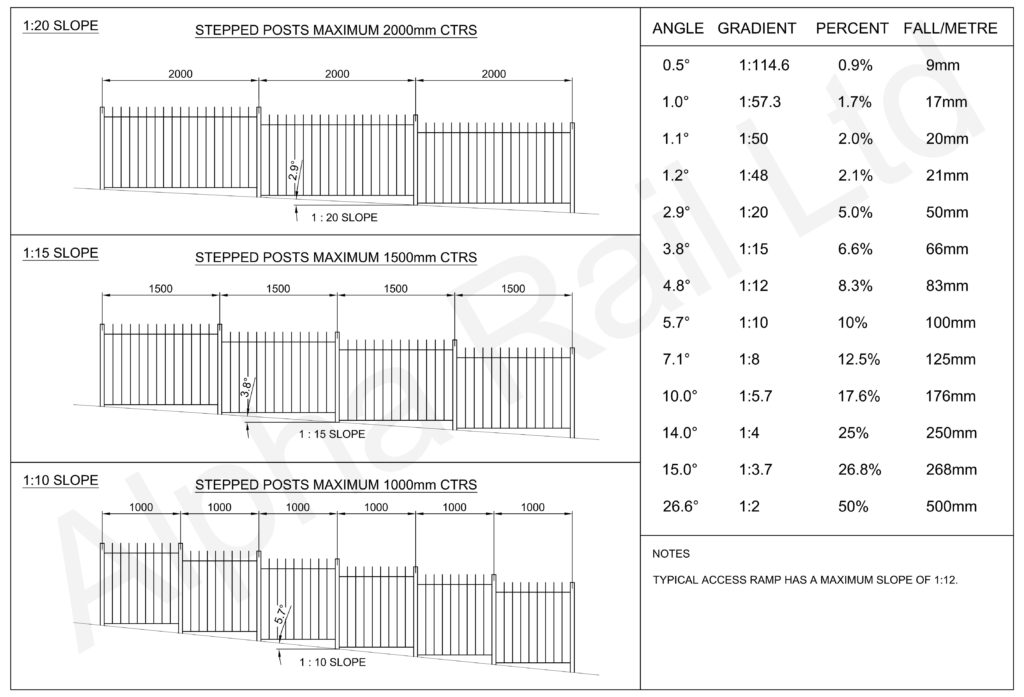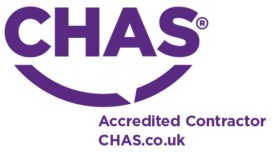The quality of the final appearance of a project very much relies on the gradient of any slope present within the area that metal railings and pedestrian guardrail will be installed. This is the primary factor to consider when making the decision regarding when to rake and when to step metal railings and pedestrian guardrail installations.
It is a rare occasion when the ground in to which metal railings or pedestrian guardrail will be installed is absolutely level. This inevitably means that in order to achieve the required visual symmetry, measuring the gradient of the grounds is vital.
Whether the project has specified decorative metal railings to be installed around the perimeter of a housing estate or public park, or pedestrian guardrail for the pathways of a busy highway or crossing point, wherever the ground is not level, a site survey will be required to measure the gradient.
This assessment can be completed by the site engineer on the project and measurements supplied to the metal railings manufacturer, or quite often, Alpha Rail will send its specialist site survey team to visit the site to carry out its own survey. This ensures the railings fit perfectly and the installation process runs smoothly.
To measure the gradient, and help make the decision between raking and stepping, we use a total station measuring device. Most total station instruments measure angles by means of electro-optical scanning of extremely precise digital bar-codes etched on rotating glass cylinders or discs within the instrument. With this analysis we are then best able to determine how to install the railings with a raked or stepped approach.
Raked Railings
The option to rake railings means that the railings will slope downwards (or upwards!) in line with the gradient, whilst also trying to keep the distance between the bottom railing and the ground level equal – this is the best visual option.

Example: Raked Churchill Railings
Stepped Railings
Stepped railings usually use standard width panels, which follow the gradient so that in the end the railings look like a flight of stairs in shape, decreasing in height as you move further down the slope. This method means there will be gaps (often triangular in shape), and, depending on their size, may allow animals to escape or enter underneath. They also create a slightly less uniform and consistent look, because the bottoms of the panels don’t follow the slope of the land.
If stepped railings are chosen, there could be significant differences in the levels of the top horizontals depending on the degree of slope.

Example: Stepped Flat Top Railings
We have created the drawing below to give guidance on when to rake or step. If you have a project that requires metal railings, gates or pedestrian guardrail and would like advice, a site survey or quotation please get in touch.

When to rake and when to step metal railings and pedestrian guardrail – Alpha Rail LTD









